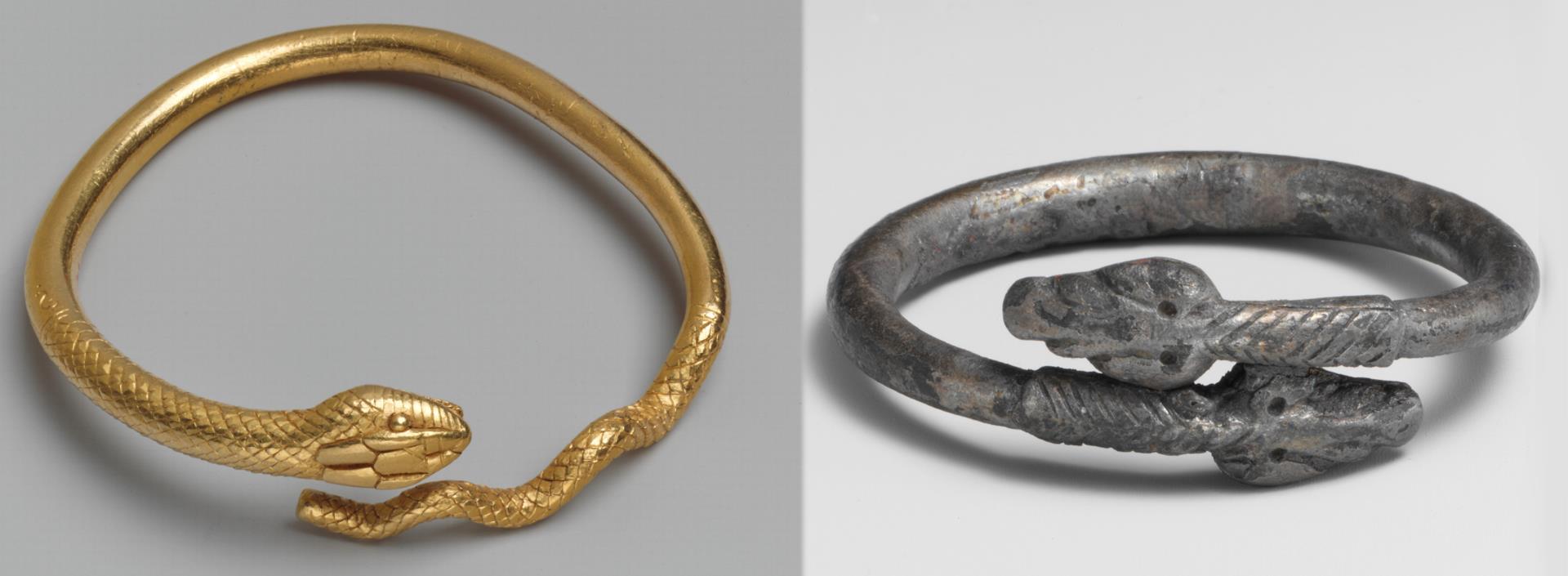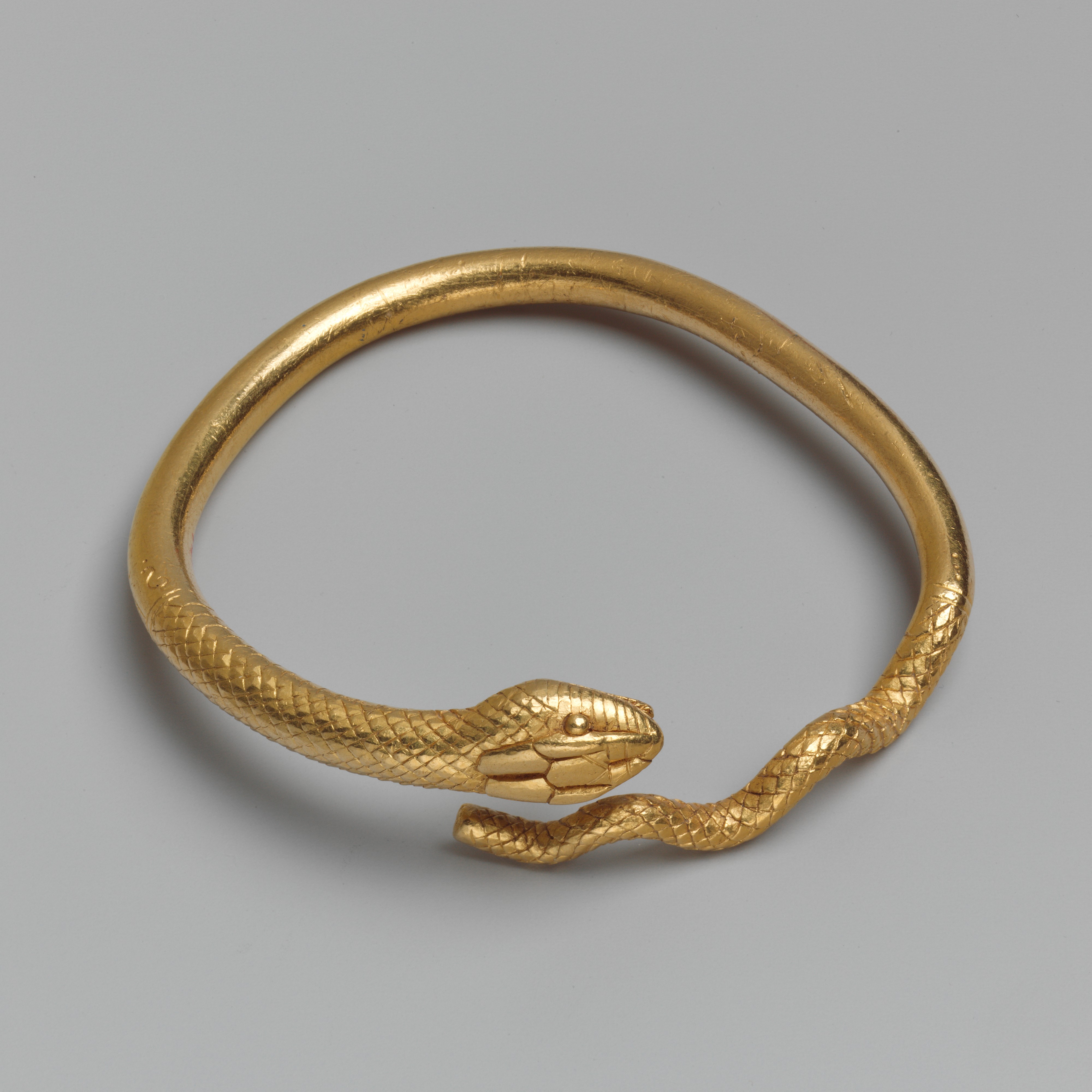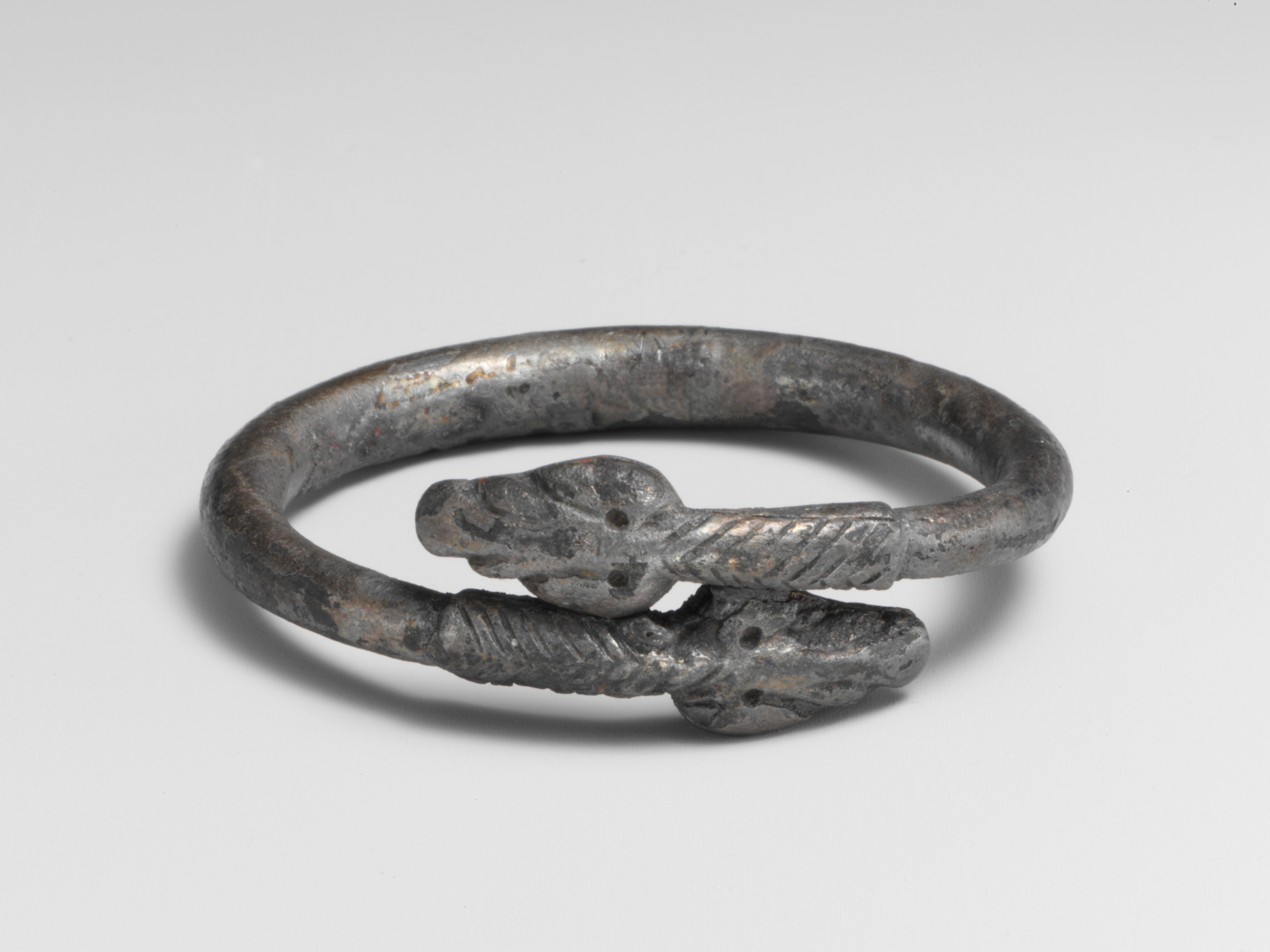Snake jewellery
Welcome to Rome and the Sasanians! In an alternative 4th century, the Sasanians are renewing their attack against the Roman empire. This forces Livia, the emperor's estrange daughter, back to Rome. There, she's thrust at the centre of her parent's quarrels, the deadly politics of the imperial court, and the Sasanian king's attention.
Introduction to the story | Princess Livia [upcoming article]| Roman clothing | Novel upcoming
Introduction to the story | Princess Livia [upcoming article]| Roman clothing | Novel upcoming
Origin
The Romans have a particular style of jewellery that they inherited from the Etruscans when Etruscan kings were ruling other Rome centuries ago. The Etruscans were famed for their metallurgic skills, and besides weapons, a prime example of this was snake jewellery. This quickly became famous through the Mediterranean and beyond as a must-have luxury good. Since then, the secrets of its forging have become well known, and now many countries are manufacturing their own versions of it.The jewellery
Snake jewelleries are most often bracelets shaped in the form of snakes. They are made of metal, traditionally bronze, although the most expensive are made in silver or a gold-silver alloy with low gold content. Using too much gold is impossible, as this metal is very bad at retaining magic and this would defeat the purpose of the jewellery. Indeed, beyond its precious metal and beauty, what makes it so valuable is its magical properties.The magic
Once activated, the magic liquifies the metal and allows the snake to move. A new owner of the jewellery needs to offer the snake some of their blood in a specific ritual to bind the jewellery to their own magic so that they can control its movement. In addition, the inside of the jewellery is hollow, which allows its owner to fill it with a poison that the snake can then inject by biting. Snakes are the symbol of numerous gods, including important gods like the Egyptian Isis and the Greek god of healing Asclepius, or local gods like Angitia from central Italy, or the Roman Lares. Thus, snakes are symbolically linked to rebirth through the shedding of their skin, healing through the properties of their venom, and protection through the killing of aggressors. Therefore, during the forging of the jewellery, it is easier to invoke and attach this kind of magic to their effigy.The Romans
Snake jewellery is very popular among rich Romans who use it as a defensive weapon that bites any would-be attacker. This is especially useful in Rome which can be very dangerous at night or even in daylight in certain locations. The richest aristocratic families also make their children wear snake jewellery in addition to their bulla, as protection is good, but smiting your enemies is even better.Rest of the World
While this use of the jewellery has spread through the Mediterranean, it baffles the rest of the world who is still using it for its primary function: a wedding gift to a spouse in a marriage made to seal an alliance. The snake is then controlled by the gifter and represents the giftee placing themselves under the protection and care of their new spouse—while also preventing them from actually attacking said spouse. However, the magic of the jewellery comes into use much more often in another context: the bedroom. Indeed, when called upon by the gifter, the snakes will animate and restrain their wearer. The magic can also alter their venom into a drug such as an aphrodisiac, stimulant, or hallucinogenic, which is then injected into the wearer. All of this means that the sight of such jewellery has a rather different connotation in those regions of the world... While most people will forever remain unaware of this difference, hilarious or insulting mix-ups frequently occur between Roman and Sasanian traders or diplomats.Table of Contents
Greek snake jewellery by The Met
Rod of Asclepius by CatherineMunro, Anka Friedrich and NetterKalle on Wikimedia Commons
Roman silver snake jewellery by The Met





Comments
Author's Notes
Written for TC's mini camp challenge part 3: archeological tradition.